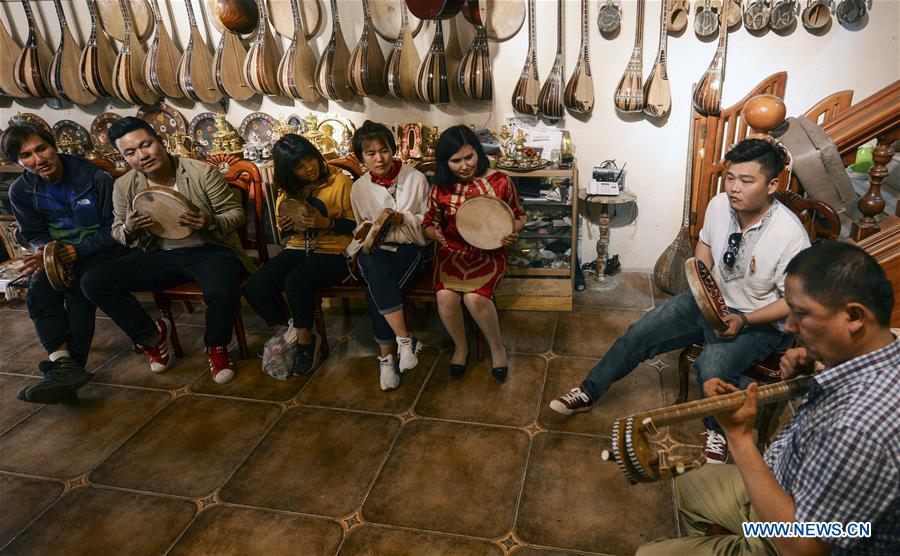Authentic Kashgar, Uygurs offer tourists their hearts, home
Around 220,000 people live in the Old Town area of Kashgar, and they are known for their laid-back attitude and bustling bazaars, which heave with local food, handicrafts, antiques and jewelry.
A cursory glance over any guide to Kashgar will undoubtedly inform you that you must get lost in the labyrinthine alleys, check out the loess mound mudstone buildings, and take tea at a 100-year-old teahouse. But if you are looking for a truly authentic experience, put down that book and instead turn to the people who know the city the best -- those that call it home.
Salametgul Khari's homestay is a delicately painted three-storey house with a good-sized yard in Kashgar, northwest China's Xinjiang Uygur Autonomous Region. Today, a dozen tourists are stood in a circle under the shade of a 60-year-old fig tree. Laughter and chatter rise up through the leafy canopy as the group tries its best to learn a traditional Uygur folk dance.
Salametgul Khari dances with tourists in Kashgar, northwest China's Xinjiang Uygur Autonomous Region, May 26, 2018. [Photo/Xinhua]
Salametgul's friends and family call her Guli, the Uygur word for flower. In 2017, the 31-year-old was the first person in Kashgar to open a homestay. "Guli's Home" has since made a name for itself as the go-to place for visitors wanting to experience the real Kashgar.
Often called immersive travel, the opportunity to live or work like locals has gained popularity as travelers look for more than a standard package holiday. How do people live? What do they eat? What is a normal day like? Today's traveler is no longer content with being shown something -- they want to live it.
In this far western corner of China, dozens of families have followed Guli's example and numerous homes and workshops are open to out-of-towners. The mood is positive; the local government is happy that tourism is increasing and residents are not only gaining from it, they are playing an active role in its success.
Tourists enjoy folk music and try to beat time with tambourines at a musical instrument store in Kashgar, northwest China's Xinjiang Uygur Autonomous Region, May 18, 2018. [Photo/Xinhua]
There has been a settlement on the site of Kashgar, a major city in southern Xinjiang, for more than 2,000 years. It is no stranger to visitors either -- as it was an important trading post on the ancient Silk Road that links China, the Middle East and Europe. The city is now inhabited by 34 ethnic groups, with Uygurs accounting for 85.6 percent of its population.
The Old Town area of Kashgar is home to the world's largest earth architectural complex. Since 2010, seven billion yuan (1.02 billion U.S. dollars) has been channeled into a huge renovation project, rendering the buildings earthquake-proof while maintaining their traditional Uygur charm.
Around 220,000 people live in this dynamic part of the city, and they are known for their laid-back attitude and bustling bazaars, which heave with local food, handicrafts, antiques and jewelry. It is a tourist's dream.



